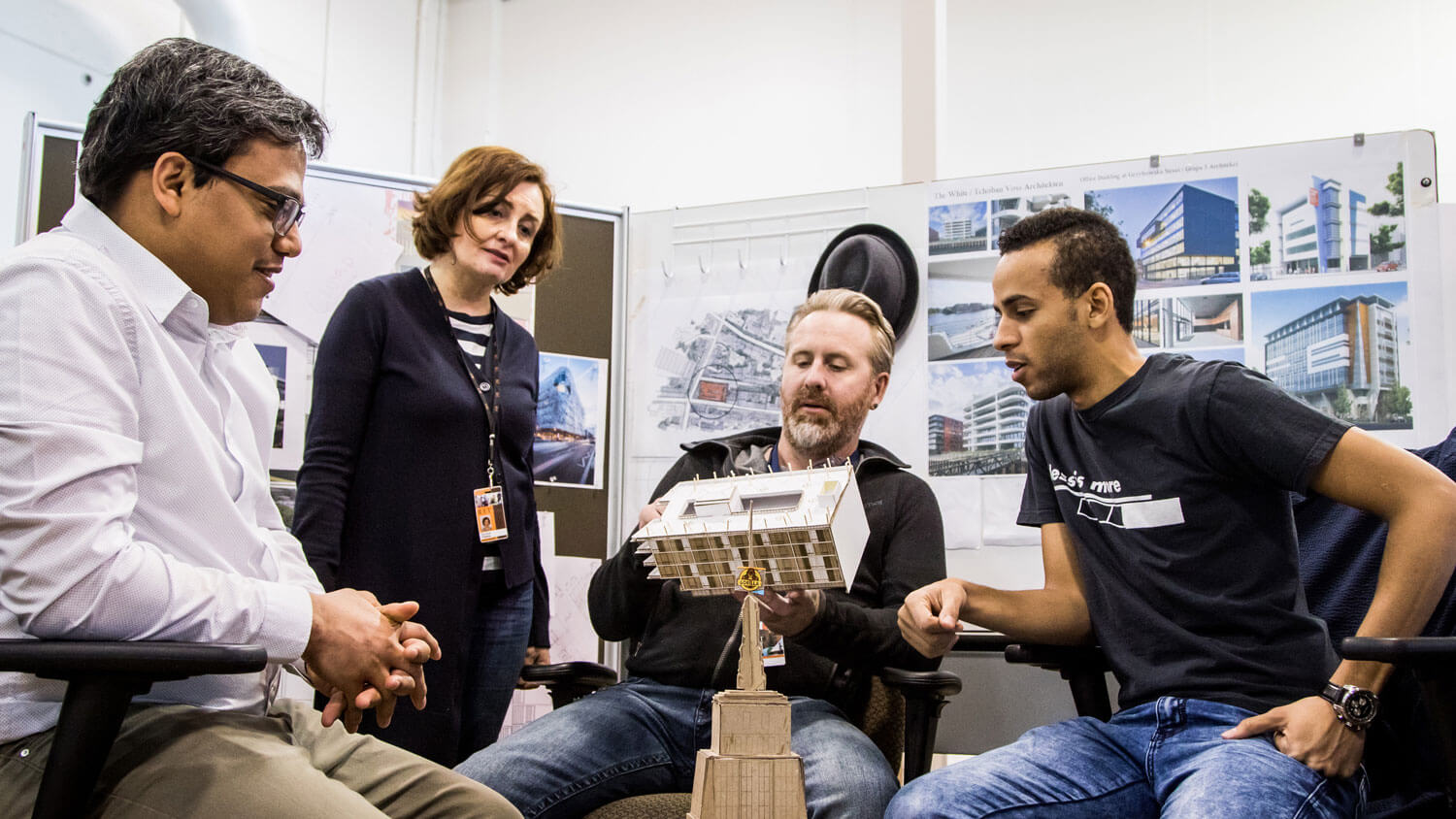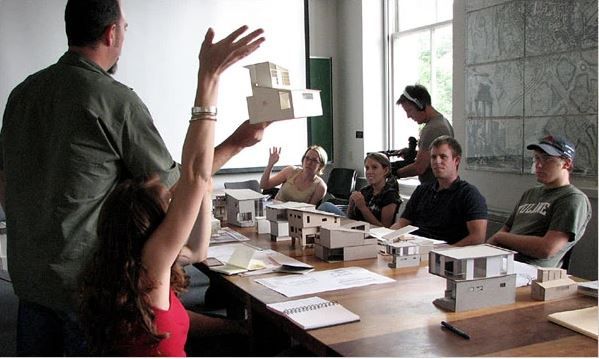Architecture education is an ever-debatable topic. Whether they are applauses or screams coming from architecture firms, students, or education experts, teaching architecture at universities is primarily a challenge for architecture professors in the first place. Being an art applied on such a macro level as a building, a street, or a city, initiating young people, even if naturally talented sketchers and dreamers, to grasp theoretical fundamentals and apply them in this intricate realm is not easy. In order to decide on broad lines of what’s majorly demanded of an architecture scholar, from their first weird architecture assignments till their PHD thesis, and who can meet this, we’re having look at an objective role of an architecture scholar, what faces architecture education nowadays, then see whether current professors are meeting this or not.
What are Architecture Teachers?
Beginning with definitions: “architecture teachers are responsible for educating postsecondary students on the basic principles and fundamentals of architecture, including architectural design concepts and the history of the field.” Research is a field they navigate writing articles or books, and keeping themselves updated about new technologies is a must. Generally, these teachers should hold a doctoral degree. Experience in the real design world is often required too.
Byron Mouton, a teacher at the Tulane School of Architecture, having earned a slot on Oxford American’s list of “Most Creative Teachers in the South” that appeared in the magazine’s August 2011 issue, believes it’s about “assisting his students in bridging the gap between the theoretical aspects of architecture and its day-to-day professional practice.” He sees his role as an educator not as one of conveying facts, but rather in “teaching students ways to effectively access information and rely on each other to collaborate and look for new solutions.”
what qualifies an architect to be a good architecture teacher?
At this point, we can ask the basic question, what majorly qualifies an architect to be a good architecture teacher? Or let’s put the question in different words. Is there a qualification that grants delivering the needed teachings for the future architects? Probably it’s having the skills mentioned above. But does that mean being a great designer? In a stereotypical notice, great designers make excellent inspirational speakers, but they are rarely inspirational teachers. When they bring their generally bossy demeanor into the design studio, students can be subjected to a withering criticism that can’t aid in unveiling their capabilities. Nonetheless, this isn’t a granted drawback, but a general case.
What about the default of having a Ph.D. title listed in the educational requirements? While it has its merits, do the demerits surpass them? Looking at the challenges facing architecture teaching at this time can help clarify the points.
We are at the apex of the huge change that must profoundly affect architecture. There are changes that start from the spread of more materials and new modes of manufacture, assembly, and construction management, to the new software bringing novel modes of analysis to such things as structural stresses, ambient conditions (light levels, air movement, and wind pressure, temperature, humidity and so on) and even movement patterns of pedestrians and vehicles. Today it’s required to initiate an architect who is rather a collaborator than a secluded genius by preparing students for the new future in which they will practice. It’s needed to pull architecture, landscape, urbanism, and engineering together for what should be a common core, the grounding for sustainability in education. A fully human design is the end target. The teachings of history, theory, design, and technical courses need to look for these goals.

Students and teachers discussing architectural models.
Obviously, this call for reform has architecture scholars as its stakeholders. So looking back at the mentioned qualifications, experience in the real world counts much. Keeping up with research is the complementary side, though it’s embedded in the mentioned practical side. So where does the doctorate requirement stand? A Ph.D. degree in architecture is the degree that demonstrates that its holder made a thesis holding an idea and an account of a period of original research. It is an introduction to the world of independent research—a kind of intellectual masterpiece. So PhDs have covered one aspect of the needed requirement: research engagement.
On the other hand, usually, the brightest students are the ones pursuing the Ph.D. path; being encouraged by their universities for the latter’s benefit. Therefore, the intellectual capabilities and interests of the PhDs and their students are greatly variable. The instructors should themselves have had to work hard to get an A to be familiar with the process of training a student to climb the ladder. Moreover, PhDs who, by knowing more and more about less and less, are not a natural fit with a generalist subject such as architecture. But these are the people who increase the research ratings and so the funding of schools, even if the research doesn’t contribute to the practice of architecture.
Theory courses and design studios on a special note can only be conducted by architects with a more feasible and realistic understanding of architecture and design. Many PhDs find it difficult to transmit their knowledge to the job market. Writing lab reports, giving academic presentations, and conducting six-month literature reviews can be surprisingly unhelpful in a world where technical knowledge has to be assimilated quickly and presented simply to a wide audience.
A new issue rises here. With their passionate thesis topics, the majority of PhDs are more likely to have developed a sharp area of expertise, picking themes through the narrow lens of some personal interest, which is not expected of architecture scholars for undergraduates. Last but not least, since architecture education revolves around design, the best way to teach design is in an apprenticeship situation, by letting the student watch someone who has mastered the skills, who knows how to think with his/her fingers, drawing on both conscious skills and what has become unconscious bodily knowledge, so integrating head, hand, and heart. This major point dismisses the case of a researcher- without the demanded real-life experience- becoming an architecture teacher capable of causing inspiration, and setting a track for a new generation of architects
Written By: Zeynab Matar, Edited: Ibrahim Abdelhady
- References:
[1]http://educationportal.com/articles/Architecture_Teacher_Job_Duties_and_Requirements_for_Becoming_an_Architecture_Teacher.html
[2] http://tulane.edu/news/newwave/092711_mouton.cfm
[3] http://www.archsoc.com/kcas/brilliantacademic.html
[4] http://www.architectural-review.com/academia/the-big-rethink-part-9-rethinking-architectural-education/8636035.article
[5] http://www.architectural-review.com/academia/the-big-rethink-part-9-rethinking-architectural-education/8636035.article
[6] http://www.economist.com/node/17723223
[7] http://time.com/3546994/reinventing-us-colleges/
[8] http://www.architectural-review.com/academia/the-big-rethink-part-9-rethinking-architectural-education/8636035.article
[9] http://www.economist.com/node/17723223
[10] http://www.architectural-review.com/academia/the-big-rethink-part-9-rethinking-architectural-education/8636035.article




